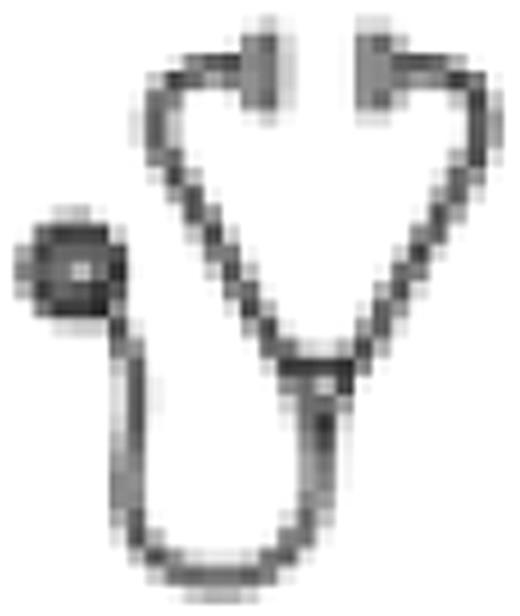Abstract
Abstract 665
Prophylaxis is considered a difficult endeavour in FVII deficiency, especially because of the very short FVII zymogen and FVIIa half-lives, mainly in childhood. The Seven Treatment Evaluation Registry (STER, www.targetseven.org) is a prospective observational, multi-centre, web-based registry concerned with the evaluation of treatments for spontaneous bleeding episodes, surgery and prophylaxis in patients with FVII deficiency. As regards prophylaxis, STER provides the frame for a structured and detailed data capture aiming at: a) identifying patients in whom prophylaxis is advisable, b) defining clinical settings in which prophylaxis is necessary and c) describing effective and safe dosing schedules.
Together with basic clinical and laboratory data related to the patient, the following information has been collected for each prophylaxis treatment course: i. Type (primary or secondary, short- and long-term), ii. Indication iii. Start/stop date iv. Schedule, v. Concomitant medications and illness vi. Bleeding episodes, vii. Other complications. The prophylactic regimen adopted reflected the decision of each enrolling physician as was the type of replacement therapy. FVIIc assays were performed at each centre lab, whereas inhibitor assays were centralized.
Nineteen patients with FVII deficiency (12 females, 7 males, age ranging from new born to 71 y.) were enrolled as a long-term prophylaxis was deemed necessary by the treating physician. FVIIc levels ranged from <1% to 4.9 of normal, median 1.5). Patients' disease severity was characterized by a striking prevalence of the severest symptoms (CNS and GI bleeding bleeding, hemarthrosis) as disease hallmark. Twelve subjects received recombinant FVIIa (rFVIIa), six received plasma-derived (pd) products (pdFVII concentrates [n=3], Fresh Frozen Plasma (FFP) [n=3]); 1 subject was given both pdFVII and an APCC. The 12 patients who were prophylaxed with rFVIIa (7 for a primary and 5 for a secondary course) were treated for the following reasons: recurrent hemarthrosis (n=4), CNS bleeding (3), menorrhagia (2), other (3). The 3 patients treated with pdFVII were reported for secondary prophylaxis courses after hemarthrosis (n=2) and hematuria, and the 3 patients treated with FFP were reported for courses after CNS bleeding (n=1), GI (1) and menorrhagia (1). Reported treatment schedules were quite various: the commonest frequency of rFVIIa administrations was “3 times a week” (n=5) ranging from daily (n=1) to once weekly (n=2); for menorrhagia, one dose on the 1st & 2nd days of the cycle were administered. The single dose of rFVIIa ranged from 14 to 80 μg/kg. Clinical efficacy of the rFVIIa prophylaxis regimens was excellent (n=10) with small intervals and medium or high dosing (14-80μg/kg). The regimens based on a dose of 30μg/kg once/week or on a dose of 16.5μg/kg 3 times/week, were considered partially effective. Prophylaxis with pdFVII was performed at a mean dose of 17 IU/kg (range: 9–30 U) 2 to 3 times /weekly: only the outcomes of the 3 times weekly regimen were reported as excellent. FFP was given at a mean dose of 15 ml/Kg twice a week but was only effective in preventing provoked bleeds. Long term prophylaxis courses carried out in 2 patients who had previously developed an inhibitor to FVII (both following multiple treatments) deserve a special mention: one received a long-term rFVIIa prophylaxis course with excellent results, while the other was given pdFVII and the APCC in association with satisfactory results. In none of the described prophylaxis courses spontaneous or catheter-related thromboses were reported.
We have identified a subset of patients with a FVII deficiency who may need a continuous, long-term prophylaxis treatment; these patients have a severe disease characterized by CNS or GI bleeding, hemarthrosis (mostly as presenting symptoms) or menorrhagia associated with low to very low FVIIc levels. Reported dosing and schedules varied widely so it is difficult to ascertain which is the optimal prophylaxis schedule but the 3 dose weekly regimens associated with medium to high replacement therapy doses appear the most efficacious. We have also shown that long-term prophylaxis is feasible in patients with an inhibitor to FVII.
Knudsen:Novonordisk: Employment.

This icon denotes an abstract that is clinically relevant.
Author notes
Asterisk with author names denotes non-ASH members.

This feature is available to Subscribers Only
Sign In or Create an Account Close Modal